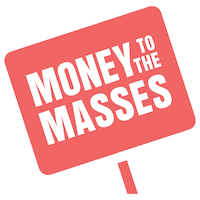
To provide some context on where we are with energy prices, consumers have been limited in their ability to shop around for the best energy tariffs since the start of the energy crisis in October 2021, where wholesale energy costs soared amid financial and political instability. As a result, over 2 million consumers were forced to move suppliers through no fault of their own - many of whom ended up on a higher tariff than they were previously on. Consumers were provided with some protection from the hike in energy prices, however, firstly through the energy price cap set by Ofgem and then subsequently via the Energy Price Guarantee (EPG) - a government subsidy that ensured consumers paid a maximum of £2,500 per year based on an average dual-fuel household.
This all means that now could be the best time to start shopping around for the best fixed-price energy deals. There is a risk that if you fix your bill, a better deal may be available later in the year, however, a fixed price may leave you with a relatively low bill if prices subsequently soar.
Compare energy deals
Protect yourself against high energy rates by comparing energy deals with Uswitch
- Enter your postcode
- Compare energy deals
- Switch energy in minutes
Cheapest fixed-price energy deals compared
We have recently seen an increase in the number of fixed-price energy deals that beat the October energy price cap and we have listed these below. Deals listed below were correct at the time of writing and are subject to change at any time. Remember, if you decide to fix your energy tariff then you are committed to that rate for the duration of the fixed period and you are unlikely to be able to switch to a better deal without paying an exit penalty.
| Energy Tariff | Outfox the Market - Fixed Dual - Jan 25 | E.on Next - 12 Month Fixed - v40 | So Energy - So Energy 12 month fix | EDF Energy (Variable tariff) - Simply tracker | E.on Next Pledge (Variable tariff) - Next Pledge v6 |
| Who can get it | New and existing customers | New and existing customers | New and existing customers | New and existing customers | New and existing customers |
| Exit fees (payable if switching before 12 months is up) | £50 dual-fuel | £100 dual-fuel | £100 dual-fuel | £50 dual-fuel | No exit fees |
| Is the rate lower than the energy price cap for January 2025 (£1,738) | Yes, this works out around 8.5% cheaper than January's energy price cap. | Yes, this works out around 8% cheaper than January's energy price cap. | Yes, this works out around 7% cheaper than January's energy price cap. | Yes, it is guaranteed to stay around 3% less than EVERY price cap for 12 months (£25 for single fuel) | Yes, it is guaranteed to stay around 3% less than EVERY price cap for 12 months |
| Approximate annual savings compared to the Ofgem price cap based on typical annual dual-fuel direct debit bill |
This tariff will save you roughly £150 per year based on average usage, plus you know what you will be paying for the next 12 months
|
This tariff will save you roughly £140 per year based on average usage, plus you know what you will be paying for the next 12 months
|
This tariff will save you roughly £125 per year based on average usage, plus you know what you will be paying for the next 12 months | This is a variable tariff that offers a fixed discount, ensuring that energy bills stay £50 cheaper than every price cap for 12 months
|
This is a variable tariff that offers a fixed discount, ensuring that energy bills stay £50 cheaper than every price cap for 12 months |
| Who should switch? | Those wanting to know what they will be paying for the next 12 months | Those who want to fix their energy tariff but want the flexibility to switch providers without penalty | Those who want to fix their energy tariff but want the flexibility to switch to another British Gas fixed tariff without penalty | Those wanting to guarantee to pay less than the energy price cap for 12 months | Those who want to ensure they do not pay more than the energy price cap over the next 12 months |
Scroll to view full table - Correct at 02.01.25
Compare the cheapest energy deals
The energy price cap is a figure set by the energy watchdog Ofgem. It is based on the annual energy that a typical family paying by direct debit is expected to use and currently stands at £1,738.
The next energy price cap announcement is due around 22nd February 2025 which will cover the period from 1st April 2025 to 30th June 2025. It means that now could be the best time to start shopping around to lock in the best fixed-rate energy deals.
For the latest energy price cap predictions, check out our regularly updated article 'Should I fix my energy prices?'.
Until now, the best strategy for most UK consumers was to stick with their existing standard variable energy tariff as there were very few fixed-price energy deals coming in lower than the energy price cap. To make switching worthwhile, ideally, you should aim to source a fixed-price energy deal that is cheaper than the current energy price cap (or even better, lower than future energy price cap predictions), however, this is something that until now, only a few providers were willing to offer.
You also need to keep in mind that if energy prices fall further, there may be better deals that come to the market in the coming months. So, fixing your energy tariff now could mean that you are unable to switch to a better deal further down the line unless you are willing to pay a hefty exit penalty fee. That being said, some energy providers, such as British Gas, are offering some customers a 'price promise', meaning they will automatically lower the fixed price deal if the energy price cap is lowered in the future. Alternatively, rather than a fixed-price energy deal, you may want to consider a 'tracker' tariff that guarantees to track slightly lower than the energy price cap. We will continue to monitor the energy market and will update our article as soon as there are some competitive energy deals available.
Compare energy deals
Protect yourself against high energy rates by comparing energy deals with Uswitch
- Enter your postcode
- Compare energy deals
- Switch energy in minutes
How to find and switch to the best energy deal
Energy providers often reserve their best energy deals for new customers, however, once the offer period ends, customers will be switched to the provider's standard rate tariff. Many customers fail to shop around meaning they remain on standard variable rate deals, either unaware that better offers exist or unwilling to shop around for themselves.
With Uswitch*, you can compare the best energy deals on the market. Once you have found an energy deal you like you can switch deals in just a few clicks. Energy switches usually take just 5 days to complete.
Energy switching FAQs
How do I know if the deal I am switching to is any good?
You can always check to make sure that the deal you are switching to is the best option for you. Double-check the standing charges for both gas and electricity and ensure that the charge per kWh represents good value and is under the current energy price cap. Ensure that the period you are agreeing to fix for works for you and your family. Also, check the small print at both your new and existing supplier so that you are aware of any additional costs including administration and exit fees.
Do I have to provide final meter readings?
If you do not have a smart meter then you may be asked to provide your latest gas and electricity meter readings when you switch. This will ensure that your new supplier can create a new bill and allows your old supplier to send a final bill. If you have a smart meter then this usually isn't required, however, your new supplier may need to check on the type of smart meter to ensure it is compatible.
What happens to my balance with my existing supplier?
Any money you are owed should be automatically refunded to your account if you are in credit when you switch, however, it is worth chasing this if it has been received within 30 days. Similarly, if you were in arrears when you switched, you should ensure that the final bill is settled as soon as possible.
If a link has an * beside it this means that it is an affiliated link. If you go via the link, Money to the Masses may receive a small fee which helps keep Money to the Masses free to use. The following link can be used if you do not wish to help Money to the Masses or take advantage of any exclusive offers - Uswitch




